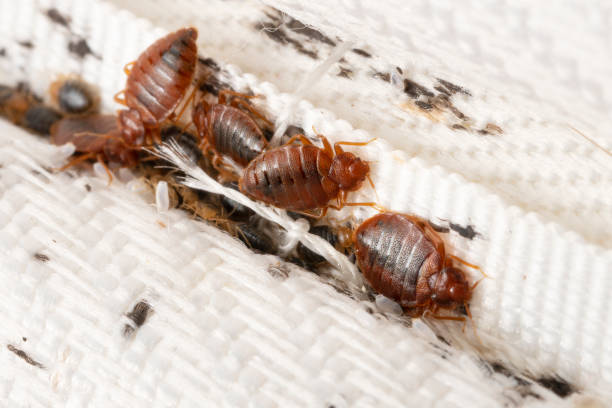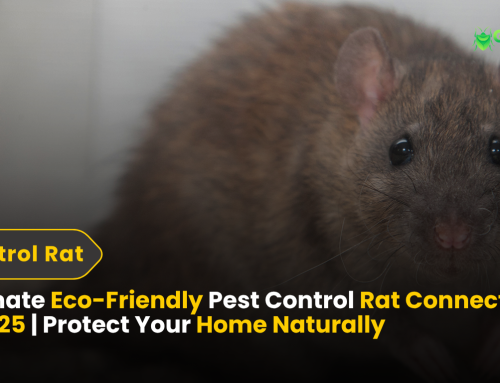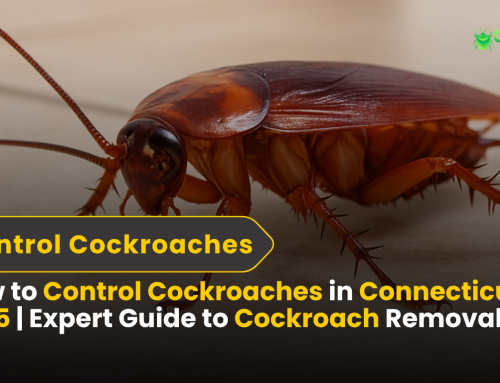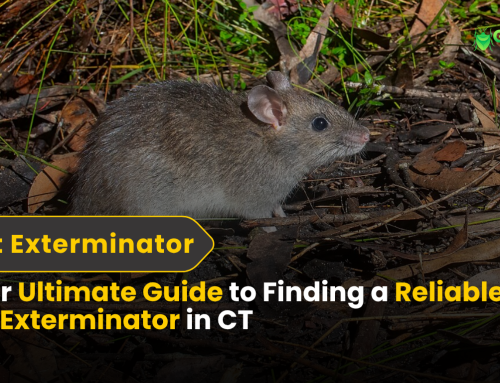Where Do Bed Bugs Come From? Understanding The Entry of Bed Bugs
Bed bugs have been a persistent issues for all human from centuries of years. Its not only effect the human life but also affecting the overall eco friendly environment. Bugs causing distress and discomfort due to their bites and their reputation for being notoriously difficult to eliminator reduce.These tiny,elusive pests invade homes, hotels and public spaces, spreading rapidly and leaving all homeowners or constructors frustrated.
In this comprehensive blog, we will delve deeper into bed bugs’ origins, behaviors, and habits. We’ll also discuss best effective strategies to prevent, identify, and treat the infestations. By the end of this blog, you’ll be armed with the knowledge you needed to protect your home and loved ones from these unwelcome invaders.
What Actually Bed Bugs Are?
Bed bugs, scientifically known as Cimex lectularius, are small, dangerous parasitic insects that feed on the blood of humans and warm-blooded animals. Despite their small size—adults grow to about 4-7 mm in length—bed bugs have a significant impact on human comfort and health. Their reddish-brown, oval-shaped bodies become swollen and darker after feeding, and their flat profile allow them to hide in tiny cervices.
Life Cycle of Bed Bugs- The Beginning
Bed bugs are undergo a major three stages life cycle: cycle: egg, nymph, and adult.
- Eggs: Female bed bugs lay pearly white eggs, roughly the size of a pinhead, in hidden locations such as mattress seams or wall cracks. A single female can lay up to 500 eggs in her lifetime, which hatch within 6-10 days.
- Nymphs: After hatching, bed bugs enter the nymph stage, passing through five molts before reaching adulthood. At each molt, they require a blood meal to continue developing.
- Adults:The Adult bed bugs can survive for up to a year under favorable conditions. They are most active at night, feeding on their hosts while they sleep.
Bed bugs’ ability to reproduce quickly and survive in adverse conditions makes them a particularly challenging pest to manage.

The Origins of Bed Bugs
1.Ancient Beginnings
Bed bugs are believed to have evolved more than 100 million years ago. Early ancestors fed on bat in caves ,coexisting with these mammals. When humans began inhabiting caves, bed bugs adapted to feeding on human blood.
Fossil evidence and historical texts from ancient Egypt, Greece, and Rome document bed bugs as a common pest. In ancient Greece, they were mentioned in the works of Aristotle, and Romans believed bed bugs had medicinal properties, using them to treat ailments such as snake bites and ear infections.
2. Global Spread
The expending of of human civilization facilitated the spread of bed bugs across the globe. As people migrated and developed trade routes, bed bugs traveled in luggage, clothing, and bedding. During the colonial era, they infested ships, making their way to new territories. By the early 20th century, bed bugs were a widespread nuisance in urban centers.
How Do Bed Bugs Spread In The World?
Bed bugs are exceptional hitchhikers, moving discreetly between locations. Their small size and ability to hide in tight spaces make them difficult to detect until infestations grow. Let’s examine the common ways bed bugs spread:
Spread Through Traveling
Hotels, hostels, airplanes, and public transportation are prime locations for bed bug transmission. These pests can hide in mattress seams, carpets, or behind headboards and easily latch onto luggage or personal items.
- Precautionary Measures: When staying in hotels, inspect bedding and furniture for signs of bed bugs. Keep luggage elevated on racks and away from walls or beds.
Secondhand Furniture
Seconhand furniture are the second home for spreading bugs. Purchasing used furniture, especially mattresses, couches, or chairs, is a common way to spread a bed bugs into your home. These pests can remain hidden in furniture for months without feeding.
- Precautionary Measures: Inspect secondhand furniture thoroughly before bringing it inside. Look for dark spots, eggs, or live bugs. Treat items with heat if possible.
Shared Living Spaces
Dormitories, apartments, and shelters with high population density are vulnerable to infestations. Bed bugs can travel between units through cracks, shared walls, or utility lines.
Public Spaces and Workplaces
Bed bugs are increasingly found in offices, libraries, theaters, and other public areas. They hitch rides on employees or patrons, traveling to homes or new locations.
Why Are Bed Bugs So Persistent?
Bed bugs’ survival skills and biological traits make them exceptionally difficult to eradicate:
-
Adaptability
Bed bugs can adapt to various environments, thriving in urban, suburban, and rural areas. They are not restricted by climate, as long as they have access to warm-blooded hosts.
-
Reproductive Potential
A single female can produce hundreds of eggs in her lifetime, which leads to rapid population growth if an infestation goes untreated.
-
Resistance to Insecticides
Over decades, bed bugs have developed resistance to many pesticides. This makes traditional chemical treatments less effective, requiring innovative solutions like heat treatments or new chemical formulations.
-
Long Survival Without Feeding
Bed bugs can survive without a blood meal for several months, allowing them to endure in uninhabited spaces like storage units or vacant apartments.
Identifying Bed Bug Infestations
Detecting an infestation early is crucial to preventing its spread. Here are the most common indicators:
- Bite Marks: Bed bug bites often appear as red, itchy welts. They are commonly arranged in clusters or straight lines, though not everyone reacts to their bites.
- Fecal Stains: Look for dark, rust-colored spots on sheets, mattresses, or furniture. These stains are excrement left by bed bugs.
- Shed Skins and Eggs: Nymphs shed their exoskeletons as they grow. These translucent skins, along with tiny white eggs, may be found in hiding spots.
- Live Bed Bugs: Seeing live bugs on your furniture, mattress, or walls is a clear sign of infestation.
- Musty Odor: In severe infestations, bed bugs produce a musty, sweet odor due to their pheromones.
How to Prevent Bed Bugs -Check Methods
Preventing bed bugs involves proactive measures, especially in high-risk situations like travel or purchasing used items. Here are some steps to minimize risk:
During Travel
- Inspect hotel rooms thoroughly, paying attention to mattresses, headboards, and furniture.
- Keep luggage off the floor and bed. Use a luggage rack.
- After returning home, wash and dry all clothing on high heat.
At Home
- Declutter: Reducing clutter eliminates hiding spots for bed bugs.
- Seal Cracks and Crevices: Repair cracks in walls, floors, and furniture to limit potential hiding places.
- Encasements: Use bed bug-proof mattress and pillow encasements to prevent infestations.
- Inspect Secondhand Items: Treat used furniture or clothing with heat before bringing them into your home.
Treating Bed Bug Infestations In A Best Way
If you suspect an infestation, swift action is necessary. Here’s how to address the problem:
DIY Methods
- Vacuuming: Use a vacuum cleaner with a hose attachment to remove bugs, eggs, and debris. Dispose of the vacuum bag in a sealed plastic bag.
- Steam Cleaning: High-temperature steam can kill bed bugs and their eggs on contact. Use this method on mattresses, furniture, and carpets.
- Laundering: Wash infested bedding and clothing in hot water, then dry on high heat.
Professional Treatment
- Heat Treatments: Pest control professionals use specialized equipment to heat entire rooms to temperatures lethal to bed bugs.
- Insecticide Applications: Licensed professionals apply targeted chemicals to infested areas.
- Fumigation: In extreme cases, fumigation may be required to eliminate severe infestations.
Common Myths About Spreading About The Bed Bugs
Myth no 1 : Bed Bugs Only Infest Dirty Homes
Truth: Bed bugs are not attracted to dirt but to warmth and carbon dioxide. Even the cleanest homes can have infestations.
Myth no 2: Bed Bugs Spread Diseases
Truth: While bed bugs can cause itching and secondary infections from scratching, they are not known to transmit diseases.
Myth no 3: DIY Sprays Are Always Effective
Truth: Most over-the-counter sprays fail to eradicate infestations. Professional treatments are often necessary.
Bed Bugs and Mental Health
Living with a bed bug infestation can significantly impact mental health. Victims often report:
- Anxiety and stress related to the infestation.
- Insomnia due to fear of being bitten.
- Social stigma and embarrassment, leading to isolation.
Seeking professional help and support can alleviate the mental strain caused by an infestation.
Final Thoughts
Blood suckers are an old and tireless nuisance that has flourished close by people for quite a long time. While their chomps don’t communicate infections, they can cause huge uneasiness, tingling, and stress. Blood suckers are extraordinarily versatile, fit for concealing in little hole and getting through months without taking care of. Grasping their beginnings, propensities, and the elements adding to their ingenuity is fundamental for powerful administration and anticipation.
These nuisances are famous for their capacity to spread rapidly through movement, handed down furnishings, and shared living spaces. Identifying an invasion early is urgent, as kissing bugs can recreate quickly and become progressively challenging to wipe out. Ordinary reviews, keeping up with neatness, and embracing protection measures can altogether diminish the gamble of a pervasion.
When confronted with a blood sucker issue, looking for proficient help is much of the time the best arrangement. Bother the board specialists utilize progressed methods like intensity therapies, designated bug sprays, and coordinated bug the executives (IPM) methodologies to destroy blood suckers completely and forestall re-invasions.
Information is your best protection against kissing bugs. Remain informed, practice watchfulness, and feel free to contact expert pest services company to the board administrationto shield your home and friends and family from these unwanted trespassers. Early activity is vital to keeping a protected and open to living climate










